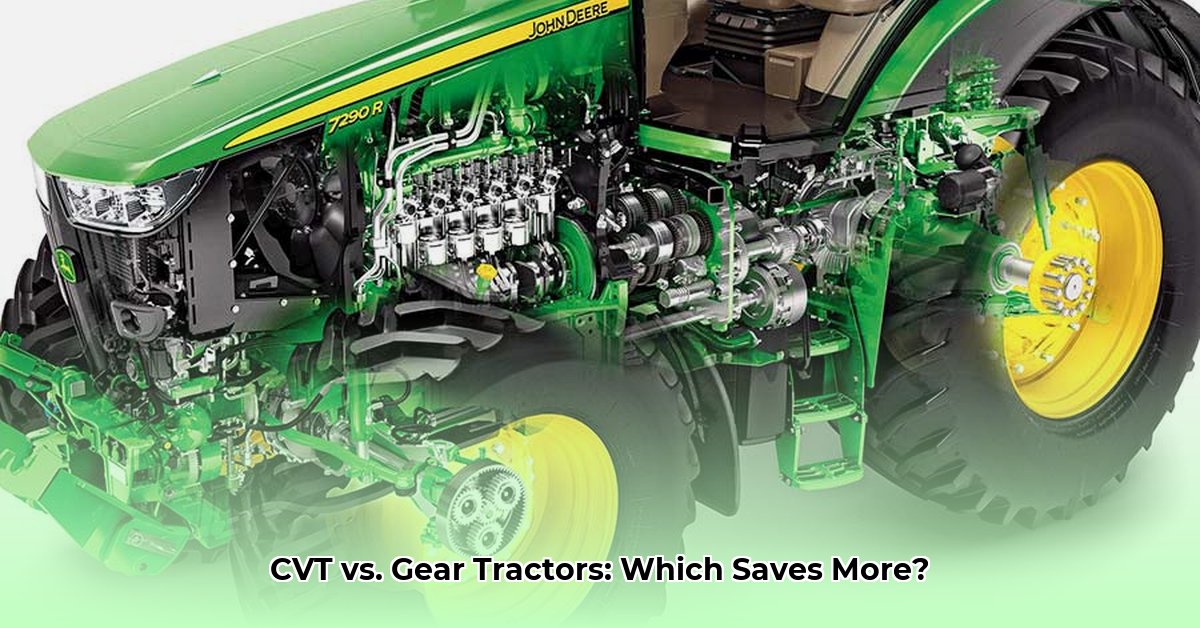
How CVT and Powershift Transmissions Work
Choosing the right tractor transmission significantly impacts farm efficiency and profitability. Two dominant types exist: Continuously Variable Transmissions (CVTs) and Powershift transmissions. This guide clarifies their differences to aid in informed decision-making. For more on fuel efficiency, see this helpful resource: tractor fuel efficiency.
A powershift transmission works like a sophisticated automatic manual transmission. It rapidly shifts through numerous closely spaced gears, providing various power options. Think of it as an incredibly fast-shifting automatic.
In contrast, a CVT offers seamless gear adjustments without jerky shifts. It uses a belt and pulley system (or a similar mechanism) to create countless gear ratios, allowing the engine to operate consistently at its most efficient speed regardless of ground speed. It eliminates the need to find the optimal gear; it's always perfectly matched.
CVT vs. Powershift: A Detailed Comparison
The following table compares key features. Remember, specific models may vary from these general trends. Do high-horsepower CVTs offer the best long-term value?
| Feature | CVT Tractor | Powershift Transmission |
|---|---|---|
| Fuel Efficiency | Generally superior; expect 10-25% savings | Typically lower fuel economy |
| Purchase Price | Higher upfront cost | Lower initial investment |
| Maintenance | More specialized and potentially costly | Simpler and often less expensive |
| Durability | Long lifespan with proper maintenance; some designs may experience wear over time | Long lifespan with proper maintenance |
| Ease of Use | Very user-friendly; often fully automatic | Requires more operator skill; newer models offer increased automation |
| Horsepower Range | Commonly found in higher-horsepower tractors | More common in lower to medium horsepower tractors |
Choosing the Right Transmission for Your Needs
The ideal transmission depends entirely on your farming operation. Several factors influence the decision.
For Smaller Farms or Budget-Conscious Operations: A powershift transmission offers a lower initial investment. However, exploring used CVT tractors might make CVT advantages accessible. Carefully analyze the initial cost against potential long-term fuel savings. Is the upfront savings worth the long-term fuel cost?
For Large Farms or High-Horsepower Applications: The fuel efficiency and productivity gains of CVT tractors often justify their higher upfront cost, particularly for extensive daily usage of powerful tractors. Long-term cost savings can be substantial. How much will you save over the lifetime of the machine?
Prioritizing Fuel Efficiency: If minimizing fuel expenses is paramount, the superior fuel efficiency of a CVT tractor is advantageous. These savings can significantly outweigh the higher purchase price over the tractor's lifespan. Is the initial premium worth the long-term fuel savings?
Emphasis on Ease of Use: For straightforward operation and reduced operator fatigue, the automatic modes of most CVT tractors are unmatched. This can minimize operator stress, possibly reducing errors and boosting productivity. Will a more user-friendly tractor impact profitability?
Factors to Consider Beyond Transmission Type
Beyond the transmission, consider the following:
- Engine size and power: Ensure sufficient power for your workload. An underpowered engine negates the benefits of any transmission.
- Tractor features: GPS, advanced hydraulics, and comfort features impact cost and efficiency.
- Farming practices: Crop types, soil conditions, and field size influence tractor needs.
Conclusion
The choice between CVT and powershift transmissions depends on individual farm needs and budget. Thorough research and consultation with experienced farmers and dealers are crucial for making an informed decision and maximizing your investment's return.